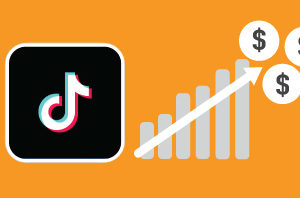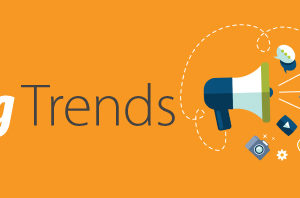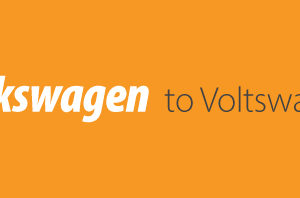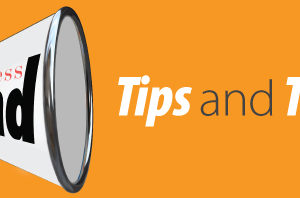
Brand awareness is very important when it comes to building your brand. Knowing what brand awareness is and how to measure it will help you grow your business. College marketing curriculums often identify awareness as the first step in a marketing or purchasing “funnel”, along with interest, consideration, purchase and preference.
What Is Brand Awareness?
As reported by Constant Contact on January 21, 2021 by Connor Benedict in the article, How to Build Brand Awareness: 20 Pro Tips. Brand awareness is all about customers knowing your name. Strong brand awareness means that your brand is synonymous with the product or service you provide.
For example, when you think of an adhesive bandage, you probably think of Band-Aids. In fact, you probably never called them “adhesive bandages” in your life. This is proof of the power of brand awareness.
This concept isn’t reserved for multi-billion dollar companies. Strong brand awareness works no matter what size your business is. Even multi-billion dollar company grew from much more humble roots and brand awareness played a key part in that growth.
The same principles hold true for your business and it’s essential that you take full advantage.
The Importance of Brand Awareness
Increasing brand awareness is the biggest focus for social marketers. But why? It all goes back to the Band-Aid example. If your brand becomes a household name, that means that people are thinking and talking about you.
It adds a level of familiarity between your customers and you. More importantly, it creates the same level of familiarity with potential customers who are looking for a product that you’re known for. Would you rather buy a used car from a stranger or from a close friend? Assuming it’s the exact same car, you’ll most likely go with the friend.
A strong level of brand awareness makes you a friend to customers and potential customers.
For example, when you think of roast beef sandwiches, odds are you think of Arby’s. This mental association means that you’ll be more likely to buy from Arby’s next time you want a roast beef sandwich — whether or not you’ve bought from them before.
Awareness is the next step after brand recognition. Recognition is what makes people associate a green mermaid logo with Starbucks. Awareness means that when you see the green mermaid, you recall brand or product information, like brand persona or the name of a specific drink or pastry you might want to buy.
It’s essentially a word association game. When customers hear a brand’s name, brand awareness will lead them to immediately think about its defining characteristic. Old Spice? Funny and odd ads. McDonald’s? Fast, cheap, and convenient. Your brand? That’s up to you and your brand awareness efforts.
How Long Does It Take to Establish Brand Awareness?
Establishing brand awareness takes time. The exact timeframe will vary dramatically depending on your company, your goals, and the amount of effort you put in.
The bottom line is that you need to be consistent and patient during this process. Even if you don’t see any immediate progress, don’t get discouraged. It could be days, weeks, months, or years before you have strong brand awareness.
If you’re impatient with your technique, it will probably show to customers. Taking a measured and controlled approach to building brand awareness is just as important as which method you choose.
How Can You Measure Brand Awareness?
Now that you’re rolling out a brand awareness campaign, how are you supposed to keep tabs on it? Understanding how successful your methods are will help you refine, tweak, and change your tactics.
Not to worry — there are a lot of different ways to measure your efforts.
Market Research
More prevalent with consumer and retail brands with big advertising budgets, market research can be used pre- and post-campaign to measure changes in brand awareness, and/or brand equity. Such research is often conducted via surveys. For more information, check out our blog, Market Research – Types and Tips.
Social Listening
Social listening has to do with skimming through social media posts. As people tag your brand, use your hashtag, and mention your name — you’ll know how well your brand awareness ideas are working.
There are automated programs to do this for you, but you can always do it manually. Search for your hashtags and company’s name. If you can, keep a log of how many mentions you get on a weekly basis.
If the number immediately shoots up after using a brand awareness tip, that’s a good indication that it’s working.
Site Traffic Data
Your website keeps information about how many people visited it. This is raw data telling you how many people clicked on your website. It doesn’t tell you why they visited or where they came from.
This data will give you an overall idea of how your new campaign is going, but you won’t get much immediate insight beyond that.
That said, this is still a tangible number that you can work with. You should be regularly checking in so you understand what a typical day looks like in terms of site traffic. If your visits go up by 50% after a sponsored event, you’ll know the event was successful.
Direct Traffic
Direct traffic is a little different. This is the result of someone actually typing in your website address, not clicking a link.
This will tell you how many visitors were aware of you to the point that they directly typed in your URL. This could be the result of any number of brand awareness techniques that urge viewers to visit your site.
While it’s impossible to determine the exact channel that leads to direct traffic, this metric is still an important one to track, as it indicates a high level of brand awareness.
Engagement on Social Media
Unlike social listening, engagement on social media is direct interaction with your brand. This could refer to reposts, direct messages, followers, comments, retweets, likes, and mentions of your username.
This is another place where you can use an app or program to automatically track your engagement. If you go to the “mentions” tab on your social media account, you’ll see these engagements.
This tells you how many customers know your brand to the level that they want to interact with you.
Google Alert and Manual Searches
Google Alert and manual searches take the idea of social media interaction to the web. You can set up a Google Alert that tells you when your brand is discussed on different websites.
You can also do manual searches for your company’s name, product, or keywords that you targeted. It will tell you how well your methods are working and how many people are talking about you.
General Tip for Building Brand Awareness
As you’re figuring out how to increase brand awareness, keep this general tip in mind: roll out your campaign with a few tactics at a time. As you just learned, there’s no clear-cut way to determine what specific brand awareness tactics are working.
If you roll out 10 tactics on the same day, it’s hard to pinpoint where any positive impact came from — you might even be wasting your time on nine of the tactics. This wasted time can hurt other aspects of your business.
Instead, you should roll them out individually or in small groups of 2 or 3. This will give you a better idea of what to focus on. Be sure to give them enough time to start working before you try the next batch.
Conclusion
At this point, you have plenty of different tactics to try. There’s no one-size-fits-all approach, so go slow and try different techniques to find out what works best for you and your business.
Having brand awareness is key to a successful business. Now that you know what brand awareness is, check out the Brand Awareness Tips and Tricks.
Additional Brand Awareness Resources
7 Best Brands of 2020 (IDeas BIG)
To Convert More Customers, Focus on Brand Awareness (Forbes)
Building Your Offline Brand Online (IDeas BIG)




